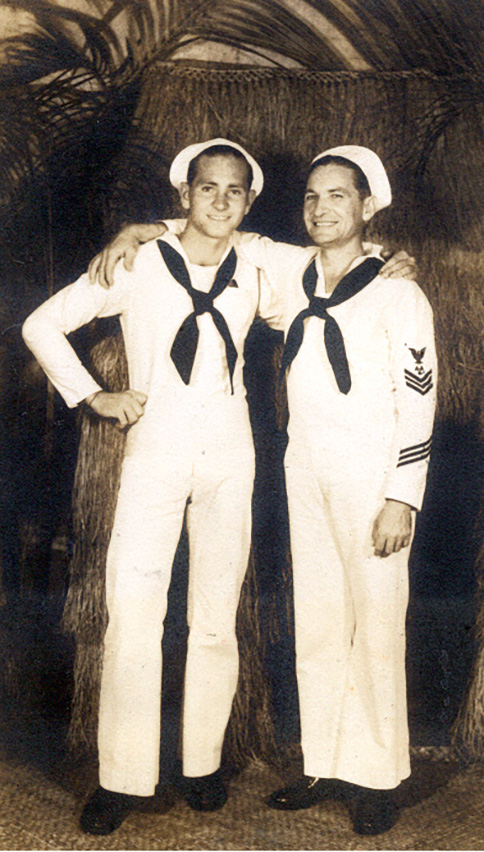
Henry Sollie has finally come home from the war.
Sollie, a Marengo County native who grew up in Atmore, was one of 429 U.S. servicemen who died when the USS Oklahoma was sunk by Japanese torpedoes during the December 7, 1941 attack on Pearl Harbor, Hawaii. His body had lain in an anonymous grave at Punchbowl, the national cemetery in Honolulu, since it was recovered from the ship’s wreckage, a process that took nearly three years.
The sailor’s remains were recently identified through his dental records and a mitochondrial DNA match with two of his great-nieces, and his body was returned to Pensacola for burial. He was laid to rest with full military honors last Friday, December 6, in Barrancas National Cemetery after a funeral service conducted in the chapel of Naval Air Station Pensacola.
Walter Henry Sollie was born November 23, 1904. He was a career Navy man who joined in 1923 and served on several ships during his 18-year military calling, including the USS Pruitt, the USS Huron, the USS North Hampton, the USS Maryland and the USS Oklahoma. He had celebrated his 37th birthday just two weeks before he was killed.
Eight U.S. battleships were among the Pacific Fleet armada that was berthed at Pearl Harbor on December 7, 1941. Sollie’s former ship, the Maryland, survived the bombing raid with relatively little damage, while the Oklahoma was one the four that sank as a result of the attack, which triggered the entry of the U.S. into World War II. Only 37 members of her crew survived.
According to U.S. Navy archives, at least three, possibly five, torpedoes tore into the ship’s hull, causing it to capsize. Many of its crew members were enjoying weekend passes away from the ship when the tragedy struck, but 415 sailors and 14 U.S. Marines aboard the Oklahoma were either killed in the bombing or were trapped below decks when the vessel quickly turned belly-up and sank beneath the harbor’s waters.
Fred Sollie watched helplessly from the deck of the USS Schley, which was undergoing an overhaul at the naval base when the surprise attack was launched, as his brother’s ship sank. The brothers, who served as water tenders on their respective ships, had reportedly planned to attend a movie together later that day.
According to an article published in the December 7, 1986 edition of the Alabama Journal and Advertiser, “Fred Sollie had just come up on deck aboard the Schley after standing watch and Henry Sollie had just finished his watch and was below deck having coffee” when the Japanese planes came screaming from the clouds and began dropping their lethal loads.
The former Atmore resident was 14 years older than his brother, who died in 1999 and also rests in Barrancas National Cemetery. Frederick Ernest and Florence McCrary Sollie, their parents, are no longer alive, nor is their sister, Nina Mae Cobb. Henry Sollie’s son, Walter Carlyle Sollie, died in infancy.
Family members who survive include five nieces, Betty Turnipseed of Milton; Jean Bodiford of Greenville; Carol West of Chunchula; Iris Plowman of Kewanna, Ind., and Cindy Mayes of New Orleans. Two nephews also survive: Clifford Allen of Mobile and Fred Sollie Jr. of Clermont, Fla., along with 12 great-nieces, great-nephews and their children.
Fred Sollie Jr. is the son, and Plowman, Turnipseed and Mayes are the daughters, of Fred Sollie, who retired from the Navy after 22 years and later worked as a Federal Civil Service employee at NAS Pensacola. Fred, an active member of the Pearl Harbor Survivors Association, was secretary of that group at the time of his death and was its past president.
Dozens of Sollie’s relatives, along with a scattering of Pearl Harbor survivors, were on hand to bid Sollie farewell as stiff winds added to the chill of a rainy Gulf Coast afternoon.
Plowman admitted that she never met her Uncle Henry and knew him only from the stories her father told from time to time, including a reluctant recounting of his brother’s final day of life.
“He really didn’t just sit around and talk about it,” said Plowman. “I think it was just one of those memories that’s so traumatic you didn’t really share it. It was just kind of within you all the time.”
She pointed out in an interview with a Pensacola newspaper that the circumstances surrounding the return of her uncle’s remains created an atypical funeral atmosphere. She added that most of the grief was shouldered years ago, by those who are no longer living.
“It’s not like your typical funeral, where a military person dies and you’re in such a deep grief; that’s been done a long time ago,” she told the Pensacola News Journal. “Seventy-five years ago, his mother and brothers had to deal with that.”
The fallen sailor’s niece said the funeral service and burial were emotional, just not in the context that would normally surround such an event.
“What we’re dealing with is the joy of his homecoming, being able to bring him home again,” Plowman explained. “That’s the emotion we’re feeling more than anything else.”
Frank Emond, one of the survivors of the Pearl Harbor attack who was at the funeral, shared those sentiments with a Pensacola television station.
“It’s great to have him back, to have a place for him here,” Emond said during an interview with WKRG-TV.
[Nancy Karrick documented Henry Sollie’s story in the December 2006 issue of “atmore” magazine.]
